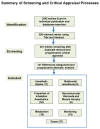Sedative Agents, Synthetic Torpor, and Long-Haul Space Travel-A Systematic Review
- PMID: 40430135
- PMCID: PMC12112975
- DOI: 10.3390/life15050706
Sedative Agents, Synthetic Torpor, and Long-Haul Space Travel-A Systematic Review
Abstract
Background: With renewed interest in long-duration space missions, there is growing exploration into synthetic torpor as a countermeasure to mitigate physiological stressors. Sedative agents, particularly those used in clinical anesthesia, have been proposed to replicate aspects of natural torpor, including reduced metabolic rate, core temperature, and brain activity.
Objectives: This systematic review aims to evaluate the potential of sedative agents to induce torpor-like states suitable for extended spaceflight. The review specifically investigates their pharmacokinetics, pharmacodynamics, and performance under space-related stressors such as microgravity and ionizing radiation.
Methods: We conducted a comprehensive search across multiple databases (e.g., PubMed, Scopus, Web of Science) for studies published from 1952 to 2024. Eligible studies included experimental, preclinical, and clinical investigations examining sedative agents (especially inhalation anesthetics) in the context of metabolic suppression or space-relevant conditions. Screening, selection, and data extraction followed PRISMA guidelines.
Results: Out of the screened records, 141 studies met the inclusion criteria. These were thematically grouped into seven categories, including torpor physiology, anesthetic uptake, metabolism, and inhalation anesthetics. Sedative agents showed variable success in inducing torpor-like states, with inhalation anesthetics demonstrating promising metabolic effects. However, concerns remain regarding delivery methods, safety, rewarming, and the unknown effects of prolonged use in space environments.
Conclusions: Sedative agents, particularly volatile anesthetics, hold potential as tools for inducing synthetic torpor in space. Nevertheless, significant knowledge gaps and technical challenges persist. Further targeted research is required to optimize these agents for safe, controlled use in spaceflight settings.
Keywords: extended anesthesia applications; induced torpor; inhalation anesthetics; long-duration space missions; metabolic reduction; microgravity; pharmacodynamics; pharmacokinetics; radiation protection; sedative agents; space exploration; spaceflight countermeasures; spaceflight physiology; synthetic torpor; torpor induction and maintenance.
Conflict of interest statement
G.H. is a founder of Altomics Datamation Ltd. and a member of its scientific advisory board. The funders had no role in the design of the study; in the collection, analyses, or interpretation of data; in the writing of the manuscript, or in the decision to publish the results.
Figures



Similar articles
-
Synthetic torpor: A method for safely and practically transporting experimental animals aboard spaceflight missions to deep space.Life Sci Space Res (Amst). 2018 Feb;16:101-107. doi: 10.1016/j.lssr.2018.01.002. Epub 2018 Jan 12. Life Sci Space Res (Amst). 2018. PMID: 29475515 Review.
-
Human torpor: translating insights from nature into manned deep space expedition.Biol Rev Camb Philos Soc. 2021 Apr;96(2):642-672. doi: 10.1111/brv.12671. Epub 2020 Dec 14. Biol Rev Camb Philos Soc. 2021. PMID: 33314677 Review.
-
Folic acid supplementation and malaria susceptibility and severity among people taking antifolate antimalarial drugs in endemic areas.Cochrane Database Syst Rev. 2022 Feb 1;2(2022):CD014217. doi: 10.1002/14651858.CD014217. Cochrane Database Syst Rev. 2022. PMID: 36321557 Free PMC article.
-
Radioprotective effects of induced astronaut torpor and advanced propulsion systems during deep space travel.Life Sci Space Res (Amst). 2020 Aug;26:105-113. doi: 10.1016/j.lssr.2020.05.005. Epub 2020 Jun 10. Life Sci Space Res (Amst). 2020. PMID: 32718676
-
Induced Torpor as a Countermeasure for Low Dose Radiation Exposure in a Zebrafish Model.Cells. 2021 Apr 14;10(4):906. doi: 10.3390/cells10040906. Cells. 2021. PMID: 33920039 Free PMC article.
References
-
- Lester D.F., Robinson M. Visions of exploration. Space Policy. 2009;25:236–243. doi: 10.1016/j.spacepol.2009.07.001. - DOI
-
- Moroz V., Huntress W., Shevalev I. Planetary missions of the 20th century. Cosm. Res. 2002;40:419–445. doi: 10.1023/A:1020690700050. - DOI
-
- Smith M., Craig D., Herrmann N., Mahoney E., Krezel J., McIntyre N., Goodliff K. The artemis program: An overview of nasa’s activities to return humans to the moon; Proceedings of the 2020 IEEE Aerospace Conference; Big Sky, MT, USA. 7–14 March 2020; pp. 1–10.
Publication types
Grants and funding
LinkOut - more resources
Full Text Sources
Miscellaneous

